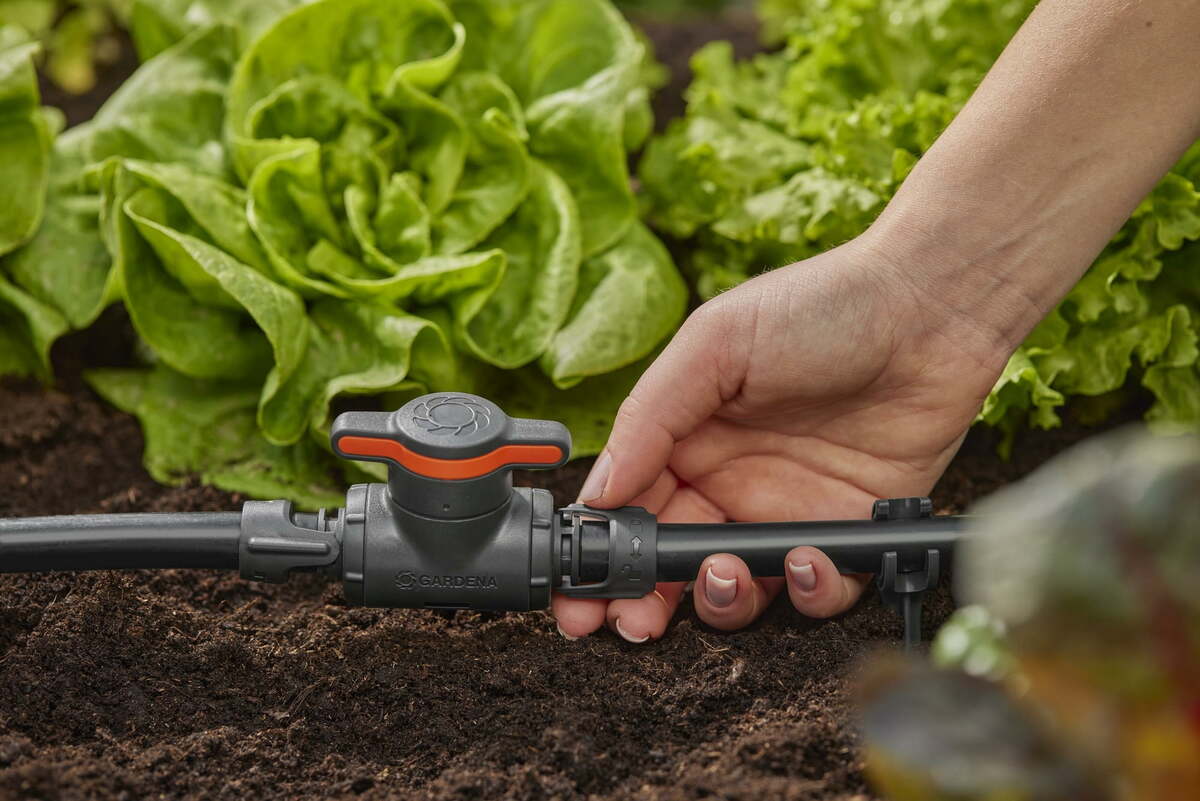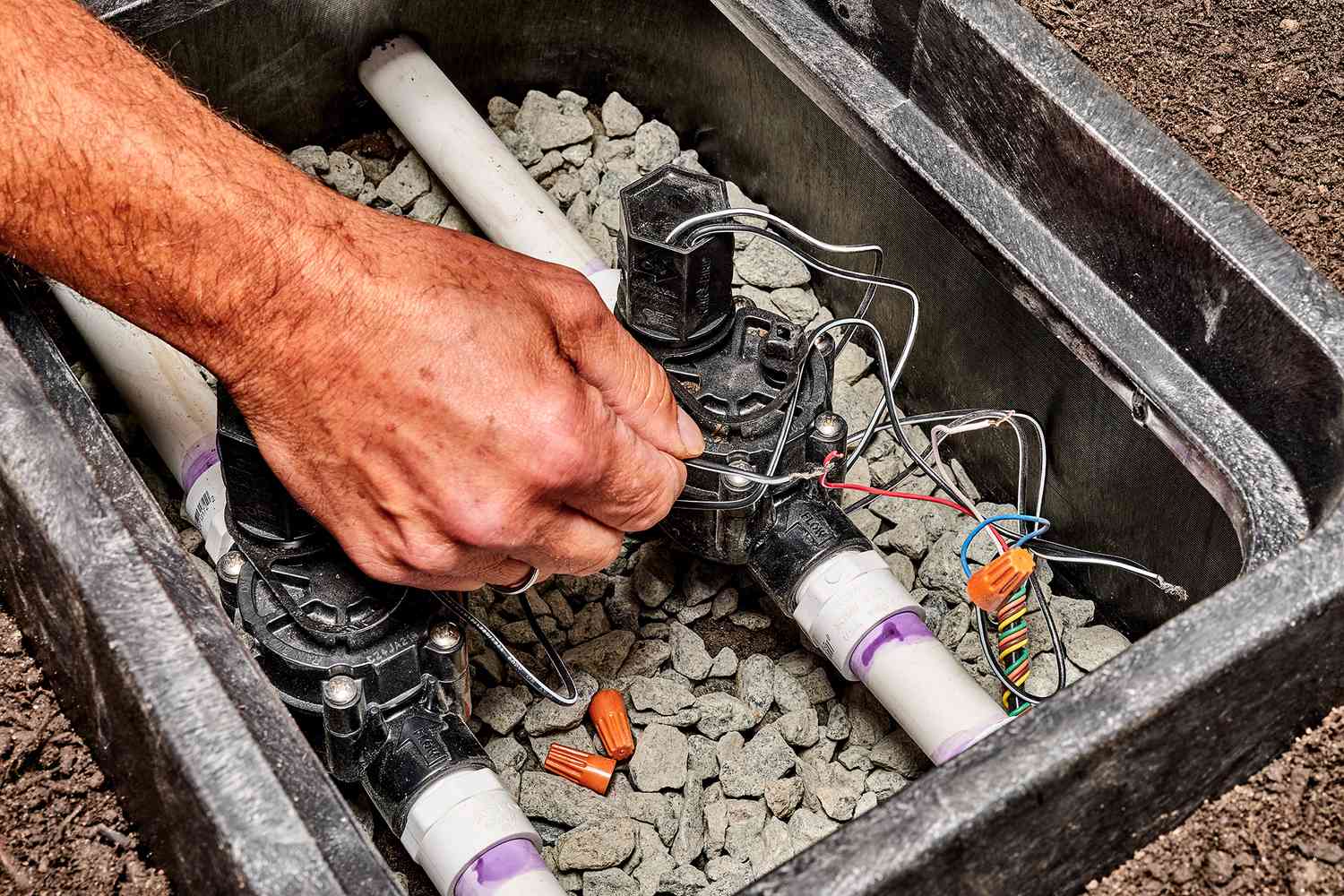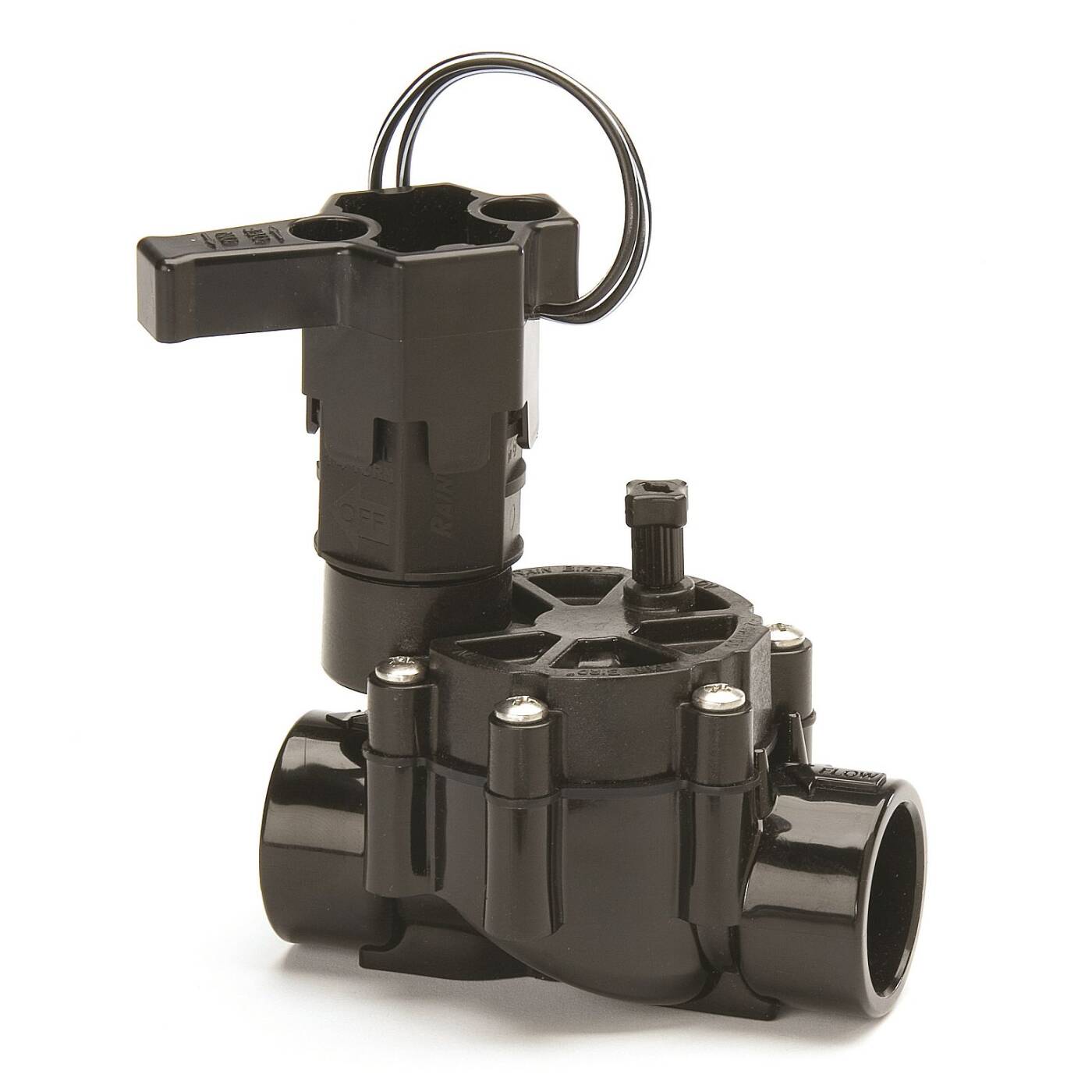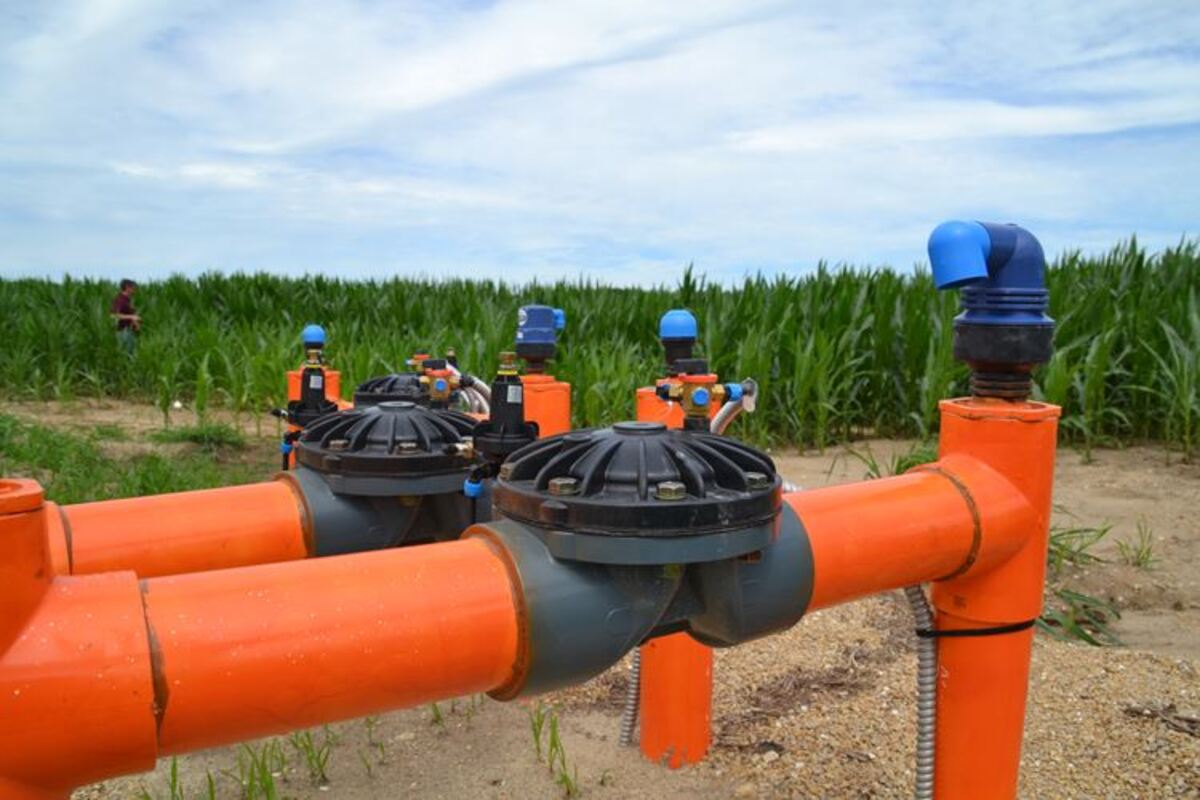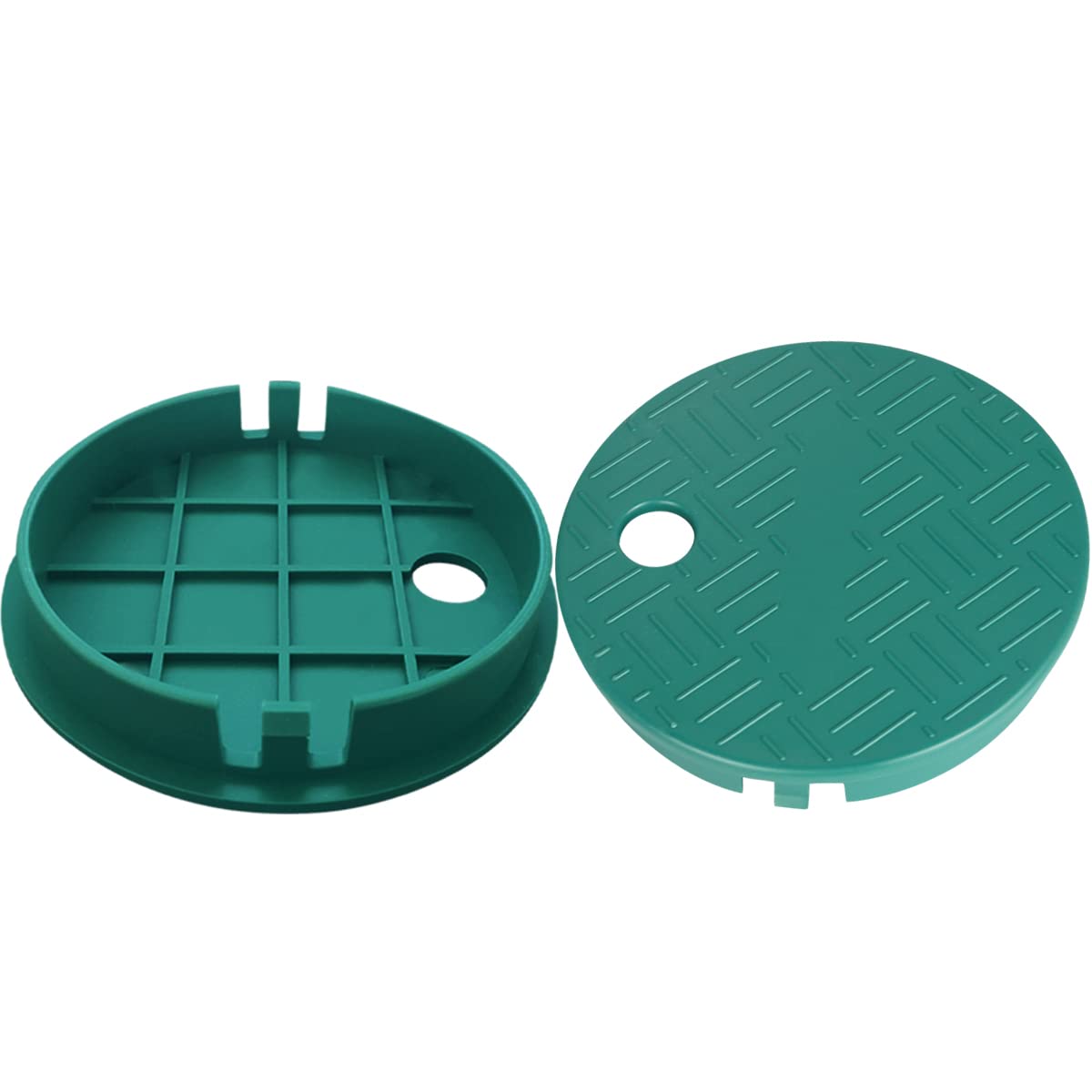Home>Gardening Tips and Tricks>Problem Solving>How To Turn On Irrigation Valve Manually
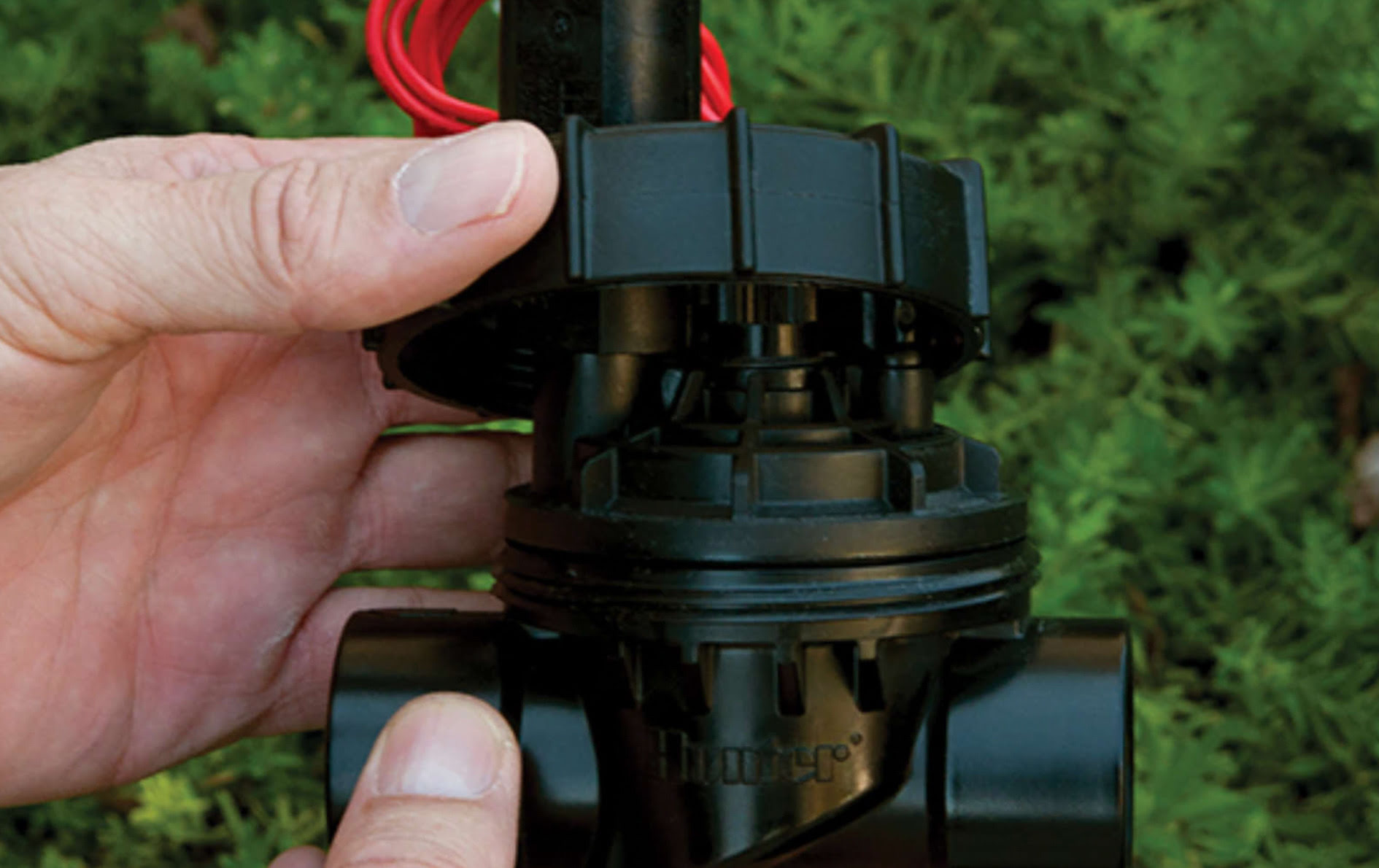

Problem Solving
How To Turn On Irrigation Valve Manually
Modified: January 22, 2024
Learn how to solve the problem of turning on your irrigation valve manually with our step-by-step guide. Ensure efficient watering for your garden and plants.
(Many of the links in this article redirect to a specific reviewed product. Your purchase of these products through affiliate links helps to generate commission for Chicagolandgardening.com, at no extra cost. Learn more)
Table of Contents
- Introduction
- Understanding Irrigation Valves
- Why You Might Need to Turn On an Irrigation Valve Manually
- Precautions to Take Before Manually Turning On an Irrigation Valve
- Tools and Materials You Will Need
- Step-by-Step Guide to Turning On an Irrigation Valve Manually
- Troubleshooting Common Issues
- Conclusion
Introduction
Welcome to the comprehensive guide on how to turn on an irrigation valve manually. Having a fully functioning irrigation system is crucial for maintaining a beautiful and healthy garden or landscape. However, there may be occasions when you need to manually activate an irrigation valve due to various reasons such as a power outage, a malfunctioning controller, or the need for a quick adjustment.
Understanding how to manually turn on an irrigation valve can save you time and prevent potential damage to your plants. This step-by-step guide will walk you through the process, ensuring that you can confidently handle the situation when the need arises.
In this article, we will first provide an overview of irrigation valves and their significance. We will then discuss why you might need to manually turn on an irrigation valve and the precautions you should take beforehand. Next, we will outline the tools and materials you will need. Then, we will delve into the step-by-step guide to manually turning on an irrigation valve. Finally, we will address common troubleshooting issues you might encounter along the way.
By the end of this guide, you will have a clear understanding of how to turn on an irrigation valve manually and be equipped with the knowledge to handle any situation that may arise with your irrigation system.
Understanding Irrigation Valves
An irrigation valve is a crucial component of an automated irrigation system. It serves as the gateway for water to flow from the main water source to the designated irrigation zones. Understanding how irrigation valves work is essential for efficiently managing your irrigation system.
There are two main types of irrigation valves: manual valves and automatic valves. Manual valves require physical intervention to turn them on or off, while automatic valves are controlled electronically through an irrigation controller or timer.
Manual irrigation valves are commonly found in smaller residential systems or in areas where automatic systems are not readily available. These valves typically consist of a lever or a handle that can be manually operated to open or close the valve.
On the other hand, automatic irrigation valves are more commonly used in larger commercial or residential systems. These valves are controlled by an irrigation controller, which allows for programming specific watering schedules and durations.
Irrigation valves are designed to regulate the flow of water to different zones or sections of your garden or landscape. Each valve is connected to a specific zone, and the controller sends an electrical signal to open or close the valve at the designated time.
It is important to note that irrigation valves are typically installed above ground, usually inside a valve box to protect them from external elements. The valve box provides easy access to the valves and allows for maintenance and repairs if necessary.
Understanding how your irrigation valves function and the differences between manual and automatic valves will help you better manage and troubleshoot your irrigation system. This knowledge will come in handy when you need to manually operate a valve or when you encounter issues that require manual intervention.
Why You Might Need to Turn On an Irrigation Valve Manually
There are several situations where you might find it necessary to manually turn on an irrigation valve. Understanding these situations will help you be prepared and effectively maintain your irrigation system.
1. Power Outage: In the event of a power outage, an automatic irrigation system will not function as it relies on electricity to operate. By manually turning on the irrigation valve, you can ensure that your plants receive the necessary water during this time.
2. Controller Malfunction: If your irrigation controller is experiencing a malfunction or is being replaced, you may need to manually operate the valves until the issue is resolved. This can prevent your plants from suffering from lack of water while ensuring your system continues to function properly.
3. Quick Adjustment: Sometimes, you may need to make an immediate adjustment to your irrigation schedule or apply additional water to a specific zone. Manually turning on the valve enables you to provide the necessary irrigation without waiting for the scheduled watering time.
4. Testing and Maintenance: Regular maintenance and testing of your irrigation system are crucial for identifying any issues or leaks. When performing these tasks, manually activating the valves allows you to check for proper water flow and assess the condition of each zone accurately.
5. Emergency Situations: In rare cases, you might encounter emergency situations such as a broken pipe or valve that requires immediate attention. Manually turning on the affected valve can help divert water away from the damaged area and mitigate any potential damage.
By understanding the reasons why you might need to turn on an irrigation valve manually, you can take proactive measures to ensure the well-being of your plants and the optimal functioning of your irrigation system. Being prepared for these scenarios will enable you to address issues promptly and minimize any negative impact on your garden or landscape.
Precautions to Take Before Manually Turning On an Irrigation Valve
Before manually turning on an irrigation valve, it is important to take certain precautions to ensure your safety and protect your irrigation system. Following these precautions will help you avoid potential mishaps and damage to your system:
1. Safety First: Always prioritize your safety when working with an irrigation system. Before performing any manual operation, make sure to turn off the main water supply to prevent accidental water flow and potential flooding.
2. Identify the Correct Valve: Locate the specific valve that corresponds to the zone you need to activate. Most valves are labeled or color-coded to make identification easier. Accidentally turning on the wrong valve can lead to watering areas that don’t need it or neglecting areas that do.
3. Inspect the Valve Box: Before handling the valves, remove any debris or dirt from the valve box. This will ensure smooth operation and prevent any obstructions that could interfere with the valve’s functionality.
4. Check for Leaks: It is important to inspect the valve and surrounding pipes for any leaks or damage. If you notice any leaks, it is advisable to contact a professional for repairs before manually turning on the valve. Ignoring leaks can lead to further complications and wasted water.
5. Use Protective Gear: When accessing the valve box, protect your hands by wearing gloves. This will help prevent any injuries from sharp edges or objects within the valve box.
6. Position the Valve Handle Correctly: Before turning the manual valve handle, make sure it is in the closed or off position. This will prevent accidental water flow and provide a smooth transition when opening the valve.
7. Proceed with Caution: When turning on the valve manually, do it slowly and steadily. Sudden and forceful movements can damage the valve or cause water hammer, a surge of water pressure that can harm your system.
By taking these precautions, you can minimize the risk of accidents, protect your irrigation system, and ensure a smooth and efficient process when manually turning on an irrigation valve. Remember, if you are unsure or uncomfortable performing any of these tasks, it is best to seek professional assistance.
Tools and Materials You Will Need
When manually turning on an irrigation valve, there are a few essential tools and materials that you will need to ensure a successful operation. Being properly equipped will make the process more efficient and effective. Here are the tools and materials you will need:
1. Screwdriver: A flat-headed screwdriver is typically needed to open the valve box. It helps you remove the cover and access the valves inside.
2. Gloves: It is recommended to wear gloves to protect your hands while handling the valve box and valves. Gloves provide a barrier against sharp edges and any debris that may be present in the valve box.
3. Valve Key or Valve Wrench: In some cases, you may require a valve key or a valve wrench to turn the valve handle if it is difficult to access or requires additional leverage. These tools are specifically designed to fit the valve handle and ensure a secure grip.
4. Pen and Paper: Having a pen and paper handy can be helpful for taking notes, documenting any issues or observations, and keeping track of which valves you have manually turned on.
5. Flashlight: If the valve box is located in a dimly lit area or if there is limited visibility, a flashlight will assist you in properly identifying the valves and performing the necessary operations.
6. Pipe Dope or Teflon Tape: If you notice any leaks around the valve connections, having pipe dope or Teflon tape on hand can be useful for sealing the joints and preventing further leakage.
7. Safety Glasses: Although not always required, wearing safety glasses as a precautionary measure can protect your eyes from any debris or particles that may be present in the valve box.
These tools and materials will ensure that you are prepared to access and operate the irrigation valves safely and effectively. By having them on hand, you can save time and avoid unnecessary difficulties during the process.
Step-by-Step Guide to Turning On an Irrigation Valve Manually
When it becomes necessary to manually turn on an irrigation valve, following a step-by-step process will ensure a smooth and successful operation. Here is a guide to help you through the process:
- Locate the Valve Box: Begin by locating the valve box, which is typically positioned in the ground near the irrigation valves. Remove any debris or dirt from the valve box to ensure easy access to the valves.
- Turn Off the Main Water Supply: Before proceeding, make sure to turn off the main water supply to prevent any accidental water flow. This is a crucial safety precaution.
- Open the Valve Box: Use a screwdriver to gently pry open the valve box lid. Be careful not to damage the lid or any components within the valve box.
- Identify the Correct Valve: Locate the valve that corresponds to the zone you want to activate. Valves are usually labeled or color-coded for easy identification.
- Inspect the Valve: Check for any signs of damage or leaks on the valve and surrounding pipes. If you notice any issues, it is best to contact a professional for repairs before proceeding.
- Position the Valve Handle: Ensure that the valve handle is in the closed or off position. This is typically perpendicular to the pipe.
- Gradually Turn the Valve On: Using your hand or a valve key/wrench, slowly turn the valve handle counterclockwise until it is fully open. Avoid excessive force or abrupt movements, as this can damage the valve or cause water hammer.
- Check for Proper Water Flow: Once the valve is open, observe the water flow and ensure that it is reaching the desired area. Make note of any irregularities or low pressure, as this may indicate a problem with the valve or the irrigation system.
- Close the Valve: When you are finished irrigating the desired area, close the valve fully by turning the handle clockwise. This will stop the water flow to the respective zone.
- Secure the Valve Box: Finally, carefully close the valve box lid, ensuring it is securely in place to protect the valves and prevent any unwanted elements from entering the box.
By following these step-by-step instructions, you can successfully turn on an irrigation valve manually. Remember to exercise caution, be mindful of safety, and seek professional assistance if needed. Regularly inspecting and maintaining your irrigation system will help optimize its performance and prolong its lifespan.
Troubleshooting Common Issues
While manually turning on an irrigation valve is usually a straightforward process, there may be instances where you encounter common issues that require troubleshooting. Here are some common issues and their possible solutions:
1. Valve Not Turning On: If the valve handle is difficult to turn or won’t turn at all, check for any obstructions or debris that may be hindering its movement. Clean the valve and the surrounding area to ensure smooth operation. If the problem persists, there may be an issue with the valve or the connected pipes, requiring professional assistance.
2. Leaking Valve: If you notice water leaking from the valve even when it is fully closed or leaking around the valve connections, it may be necessary to replace damaged seals or gaskets. Applying pipe dope or Teflon tape to the connections can also help create a tighter seal.
3. Uneven Water Flow: If you notice that some zones receive inadequate water while others receive excessive water, there may be a problem with the valve or the distribution system. Check for any clogs or blockages in the irrigation lines or nozzles and clean or replace them as necessary. Adjusting the valve settings or sprinkler heads can also help distribute the water more evenly.
4. Low Water Pressure: If the water pressure seems low in certain zones, it could be due to a faulty valve or a problem with the water supply system. Check for any kinks or leaks in the irrigation lines, clean or replace clogged filters, and ensure that the main water supply is fully open and functioning properly.
5. Water Hammer: Water hammer refers to a sudden surge of water pressure, which can cause loud banging noises and potential damage to the irrigation system. This can occur when a valve is abruptly closed or opened. To prevent water hammer, make sure to gradually and gently turn the valve handle when operating it.
If you encounter any of these issues or other problems with your irrigation system that cannot be resolved through simple troubleshooting, it is recommended to consult with a professional irrigation technician. They have the expertise to diagnose and address more complex problems, ensuring the efficient functioning of your irrigation system.
Conclusion
Being able to manually turn on an irrigation valve is a valuable skill that every garden or landscape owner should possess. Whether it’s due to a power outage, controller malfunction, or the need for a quick adjustment, knowing how to manually operate your irrigation system can ensure your plants receive the necessary water when needed.
In this comprehensive guide, we have covered the importance of understanding irrigation valves and the differences between manual and automatic valves. We explored various scenarios where you might need to turn on an irrigation valve manually, such as during a power outage or for quick adjustments. We also highlighted the precautions to take before manually activating a valve, emphasising the need for safety and proper equipment.
Moreover, we provided a step-by-step guide to help you successfully turn on an irrigation valve manually, ensuring a smooth operation and proper water flow to your desired zones. We also addressed common troubleshooting issues that you may encounter along the way, allowing you to troubleshoot and resolve problems efficiently.
Remember, regular maintenance and inspection of your irrigation system is essential to identify any issues and ensure optimal functioning. Additionally, seeking professional assistance when needed can help address more complex problems and ensure the longevity of your system.
By following the guidelines and information provided in this guide, you will be well-equipped to handle any situation that requires manually turning on an irrigation valve. Enjoy the benefits of a thriving garden or landscape with a fully functional irrigation system!

